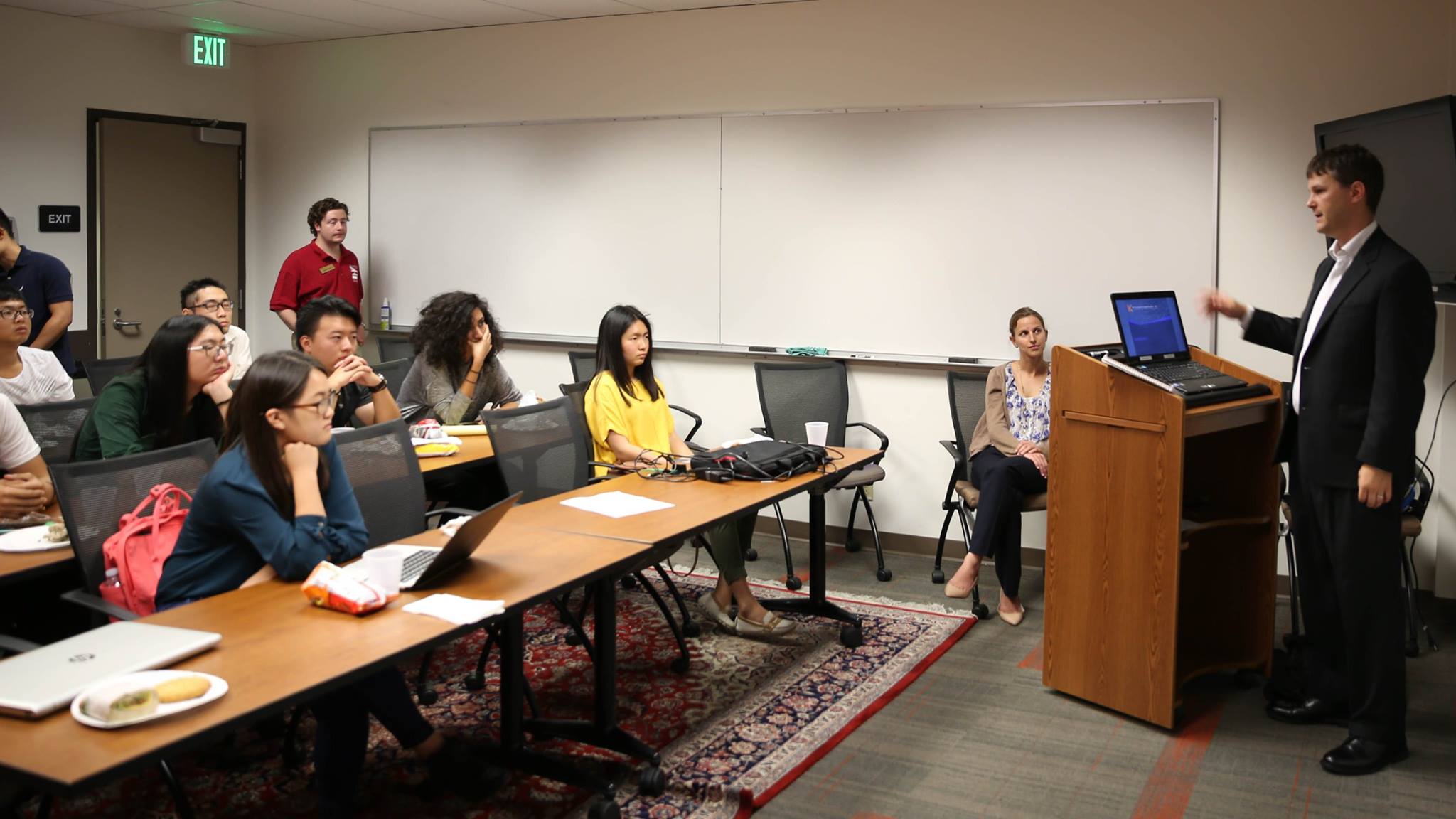News | ITE USC Student Chapter General Meeting: Improving Travel Time Reliability Using Bluetooth Technology
Stop the VideoNews

METRANS UTC
ITE USC Student Chapter General Meeting: Improving Travel Time Reliability Using Bluetooth Technology
Friday, October 14, 2016
by By Sona Sehat, MSCE 2017

Photo by Eric Shen
On October 5th, the Institute of Transportation Engineers (ITE) USC chapter held its first event of this Fall semester, featuring an Intelligent Transportation System (ITS) application in the industry. Darryl DePencier, a professional urban planner at Kittelson & Associates, gave an up-close look at how to use Bluetooth technology in investigating travel time reliability. Attendees attended included students at both the graduate and undergraduate level and alums from the fields of transportation engineering and planning.
DePencier has extensive planning experience spanning regions across North America, including California, Florida, Oregon, and British Columbia. His work has been mostly focused on regional planning, transit planning, system performance measurement, and geospatial analysis. Caitlin Shankle, Master of Planning Graduate from USC this past spring and a current Kittelson & Associates employee also presented at the seminar.
DePencier opened by introducing the audience to a new concept of travel planning concerning travel time reliability. Travel time reliability is a measure of how dependable the travel time is on a given roadway. It is important for travelers, before making their decisions, to know what time they would arrive at their destinations, how much it would cost, and if it is convenient. He discussed the importance of travel time reliability because nowadays our roadways are more frequently operating near or above capacity. In addition, uncertainties in travel time as a result of accidents, work zones, weather, and non-recurring congestion, etc., significantly impact our trips in many ways.
He then shared how Bluetooth technology was utilized in a case study for San Luis Obispo Council of Governments (SLOCOG) 101 Mobility Master Plan, in which reliability was measured using Bluetooth technology. The Bluetooth detectors were developed by one of Kittleson’s subsidiaries. Each detector can capture the signal of devices with Bluetooth functionality within a 300 ft. range. Detectors are installed along the highway corridors. Since each signal captured is recorded with an independent device ID, real travel time and speed data can be generated by comparing the time point collected by different detectors for each device.
Students were intrigued by the application. One asked about the advantages of using Bluetooth instead of using other detectors, like loop detectors. DePencier explained that the major advantage is that Bluetooth detectors give information on the travel time and speed on a particular car, while loop detectors do not. He also noted, however, that Bluetooth detectors cannot capture all signals and do not give accurate traffic count as that given by other traditional devices.
Wrapping up the event, Professor Eric Shen, faculty supervisor of the USC ITE Chapter, talked about the importance of participating in professional organization activities, attending seminars, and expanding professional networks for students. He encouraged students to work to get to know the professionals so that professionals know and remember them later. Both DePencier and Shankle shared with the group the ways they prepared for their own careers. They also gave the students a sneak peek of their company culture and opportunities for students.
Sona Sehat
Sona Sehat is a second-year graduate student majoring Transportation Engineering at the USC Viterbi School of Engineering. She is interning at Port of Los Angeles as a Transportation Engineering Intern. She can be reached at [email protected].
News Archive
- December (1)
- November (6)
- October (4)
- September (2)
- August (3)
- July (4)
- June (3)
- May (7)
- April (8)
- March (11)
- February (8)
- January (7)
- December (7)
- November (8)
- October (11)
- September (11)
- August (4)
- July (10)
- June (9)
- May (2)
- April (12)
- March (8)
- February (7)
- January (11)
- December (11)
- November (5)
- October (16)
- September (7)
- August (5)
- July (13)
- June (5)
- May (5)
- April (7)
- March (5)
- February (3)
- January (4)
- December (4)
- November (5)
- October (5)
- September (4)
- August (4)
- July (6)
- June (8)
- May (4)
- April (6)
- March (6)
- February (7)
- January (7)
- December (8)
- November (8)
- October (8)
- September (15)
- August (5)
- July (6)
- June (7)
- May (5)
- April (8)
- March (7)
- February (10)
- January (12)















